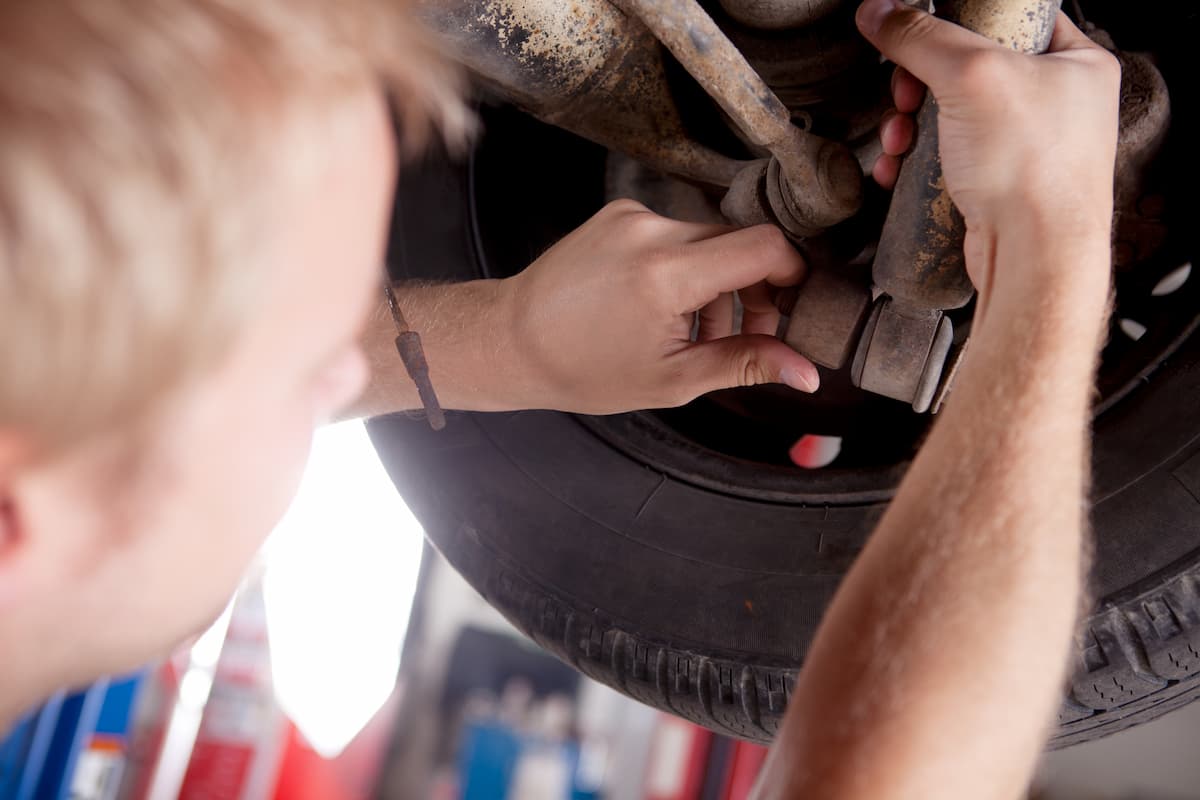When Is It Time to Replace My Car’s Shocks or Struts?

If your shocks or struts aren’t performing as they should, you’ll probably feel it from the driver’s seat. That bumpy ride is unpleasant for you and can be harmful to your car’s components. Plus, it can put you at risk of getting into an accident. If you hit a bump with bad shocks or struts, you could lose your ability to maintain control at the wheel. Here’s a brief guide to help you determine whether your shocks or struts need replacement.
What are Shocks and Struts?
Shocks and struts are two different components of vehicle suspension systems. However, they serve the same function: to prevent excessive bouncing and maintain easy steering and handling. If your car provides a comfortable driving experience, you have the shocks or struts to thank for that smooth ride. That stabilizing effect also protects many of your car’s components from unnecessary stress.
What’s the Difference Between Shocks and Struts?
Your vehicle has either shocks or struts, but not both. The shocks exclusively provide shock absorption, optimizing your car’s handling. If your car has struts, they support wheel alignment in addition to optimizing vehicle handling. Because they serve double duty, whenever you replace a strut, you’ll also need a wheel alignment.
Signs Your Shocks or Struts Need Replacing
Bouncing and jolting are easy-to-spot warning signs of worn-out shocks or struts. However, here are a few other signs to watch out for:
- Steering issues. Does it feel more difficult to steer than usual? Does your car feel unsteady when taking corners? You may need new shocks or struts if you have a stiff steering wheel or excessive sway on turns.
- Irregular tire wear. Bad suspension or incorrect wheel alignment can cause your tires to wear unevenly. If the edges of your tire treads reveal cup-shaped wear spots, your tires are at risk of losing grip on the road.
- Fluid leaks. If you notice hydraulic fluid dripping from your vehicle, faulty shocks or struts may be to blame.
- Braking issues. Any instability in your braking experience could indicate worn struts. If your vehicle bucks or lurches when you apply the brakes, have a mechanic take a look.
Whether you experience any of these signs or not, it’s important to have your car’s shocks or struts replaced after every 80,000 kilometres of driving. Check the manufacturer’s recommendations for your vehicle’s make and model for specifics.
Auto Repair and Maintenance in Vancouver and British Columbia
If you’re having trouble with your steering and suspension, you need the help of a Minit-Tune & Brake Auto Centres expert. We’re your guaranteed source for vehicle repairs and maintenance in British Columbia and Alberta. Contact us today to book an appointment at one of our 15 locations.
MINIT-TUNE BLOG
Minit-Tune & Brake Auto Centres Address Common Issues
Here at Minit-Tune & Brake Auto Centres in British Columbia, we’re always pleased to help our customers get the most out of their cars and trucks. To that end, we’ll add a relevant blog topic from time to time to keep you up to date and getting the most out of your vehicle.
